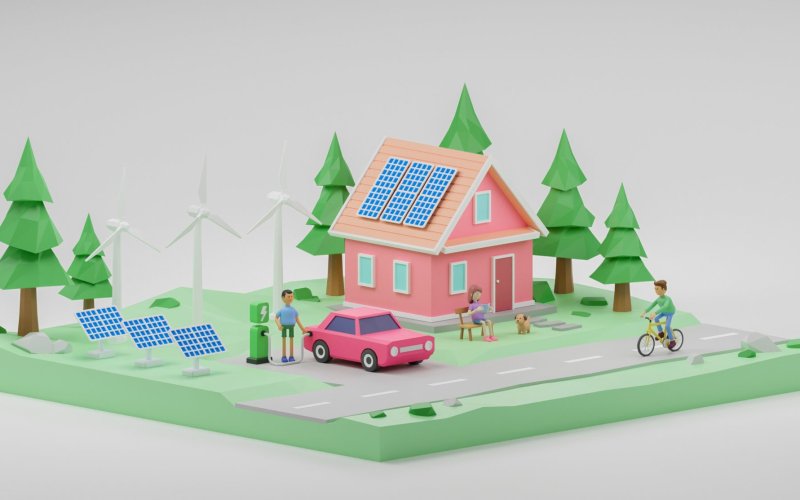Before I get to the answer, I have to remind you that electricity is one of many forms of energy and we “produce” it by converting another form of energy into it.
Typically, we need to move a magnet that rotates between coils (wound wires).
In order to spin the magnet, we can use wind, water, or water vapour obtained by burning different fuels.
As the rotating magnet transfers its energy to the coils, it loses it and therefore slows down.
If it did not produce electrical energy, it would still rotate (if we ignore losses) at the same speed.
So if there is no electricity consumption, the rotating magnet will not slow down and its drive (air, water, steam) will not lose its kinetic energy and will not slow down.
Thus, the water would have the same speed after passing through the hydroelectric power plant, the blades of the wind turbines would still rotate at the same speed, the wind in front of them and behind them would have the same speed and the water vapour would leave the thermal power plants.
Once, dynamos (small power plants) were used to light bicycles, which were attached to the bicycle and started to rotate while riding.
Stepping on the pedals was significantly more demanding — we had to start the bike and also turn on the light bulb.
If the light bulb broke, riding the bike was much easier.
Because we invest a lot of money in the construction of power plants, we try to keep them in operation as much as possible.
That’s why, in the case of reduced consumption, we do not want the input energy to simply pass through the power plant without being converted into electricity and we try to ensure energy consumption in various ways — either by storing it or by transferring it to places where consumption is higher.
Ensuring the smooth operation of power plants is quite a complicated matter and only because we know how to do it, we have electricity available whenever we want.
Which is not entirely obvious.
Finally, I’ll just explain why I put the word “produce” in quotes in the introduction — we can’t produce any energy, we can only convert it from one form to another — this describes the law of conservation of energy.
And the 1st and 2nd law of thermodynamics describes that all these transformations lead to the fact that each transformation worsens the possibility of further use of energy and that each transformation is accompanied by losses.
Want to ask something?
Send us an e-mail with the subject “Physics mysteries” to the address:
We can't wait to tackle your interesting questions!





